- About us»
- Net income calculator»
- Population aging»
-
- Least developed regions»
-
- Average wage
- Material need benefits
- Meal allowance
- Counties of Slovakia
- Inflation
- Living and Subsistence Minimum
- Unemployment of Czechia and Slovakia
- NACE Classification
-
- Life expectancy
- Gender differences
- Youth unemployment and NEET
- Minimum wage in EU
- Unemployment rates of different age groups
- Share of salaries on GDP
- Employment rate
- Long term unemployment
- Percentage of employees ususally working at nights
- Unemployment rate
- NEET
-
- Bratislava and surroundings
- Kopanice
- Danube river
- lower Vah river
- middle Vár river
- upper Nitra river
- lower Nitra river
- Mining cities
- Kysuce a Orava
- upper Vah river - Liptov
- Spiš cities
- upper Hron river
- Juhoslovenská kotlina
- Košice fold and Torysa river
- upper Zemplín
- lower Zemplín
- EU regions
- NUTS3 regions of Slovakia
- LAU1 dataset
-
- Projects and activities
- Inclusive growth»
- Good work
- Project SKRS
- Social system – reality and vision
-
- Education of unemployed
- Young unemployed not taking part in education
- Proposal to change the system of education funding
- Library
- News»
- Contact
Estonia – EE00
EU regions: Estonia > Estonia > Estonia
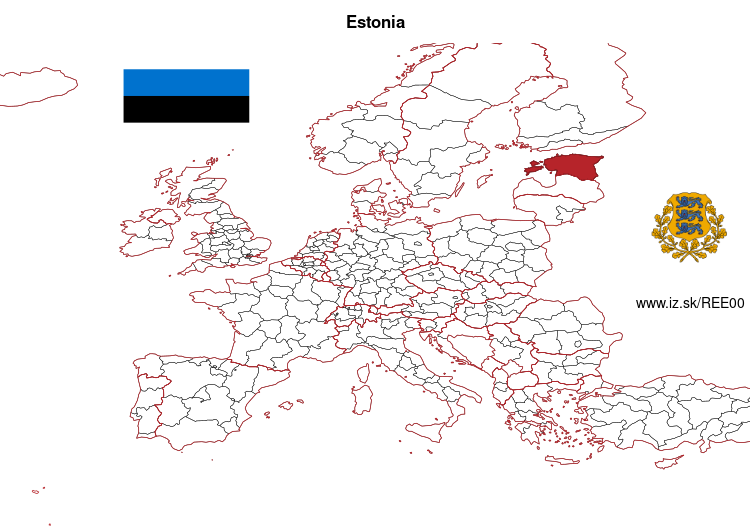
| Indicator | Period | Value |
|---|---|---|
| Life long learning | ||
| life long learning participation | 2024 | 23.3 |
| Part time jobs and flexible employment | ||
| percentage of part time workers | 2024 | 14.32 |
| percentage of part time workers, men | 2024 | 10.24 |
| percentage of part time workers, women | 2024 | 18.41 |
| Gender differences | ||
| gender gap in employment rate | 2024 | 98.69 |
| gender gap in unemployment rate | 2024 | 100 |
| Graduates and young people | ||
| unemployment rate of youth with elementary education | 2024 | 29.5 |
| NEET | 2024 | 10.2 |
| Gross domestic product | ||
| GDP per capita in PPS of EU average | 2023 | 80 |
| Employment | ||
| employment rate | 2024 | 75.7 |
Estonia slovensky: EE00
Subregions: Põhja-Eesti, Lääne-Eesti, Kesk-Eesti, Kirde-Eesti, Lõuna-Eesti
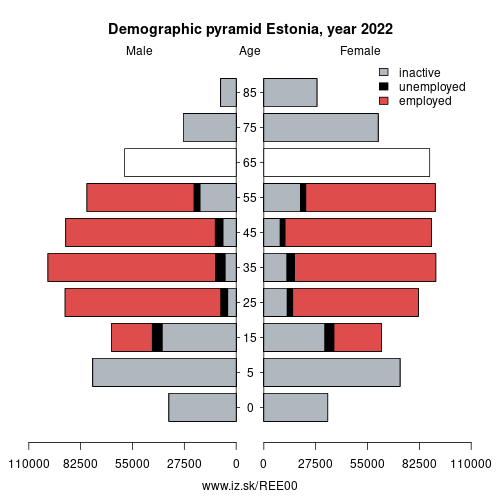
Unemployment
| Indicator | Period | Value |
|---|---|---|
| Unemployment | ||
| unemployment rate | 2024 | 7.9 |
| youth unemployment rate | 2024 | 19.1 |
| Long term unemployment | ||
| long term unemployment | 2024 | 1.8 |
| share of long term unemployed | 2024 | 23.5 |
Demographics
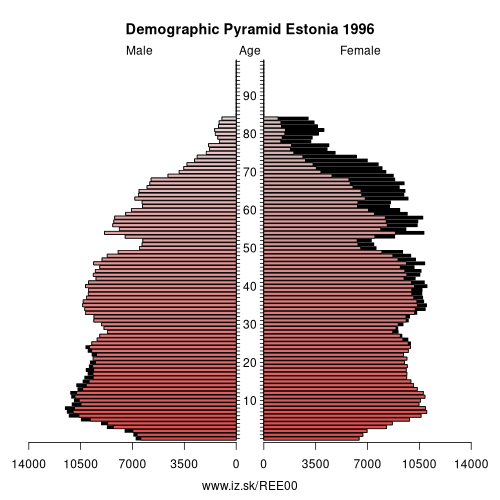
| Indicator | Period | Value |
|---|---|---|
| Demographics | ||
| number of inhabitants | 2024 | 1 374 687 |
| population density | 2023 | 31.8 |
| old-age dependency ratio | 2024 | 32.2 |
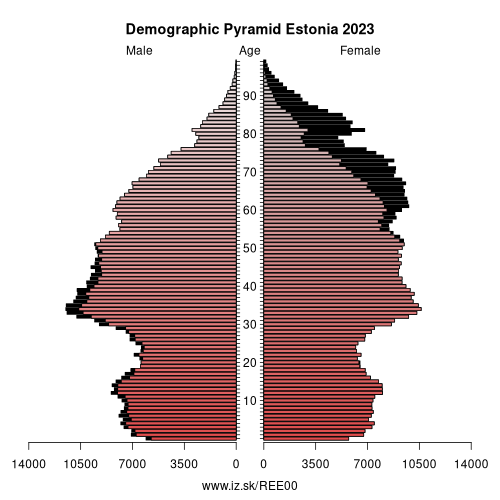
Employment by sectors, Estonia
| NACE r2 | % | NACE r2 | % | ||
|---|---|---|---|---|---|
| A | 21.6 | 3% | B-E | 125.7 | 18% |
| F | 60.4 | 9% | G-I | 171 | 24% |
| J | 40 | 6% | K | 18.2 | 3% |
| L | 12.9 | 2% | M_N | 59.3 | 8% |
| O-Q | 155.4 | 22% | R-U | 39.3 | 6% |
| TOTAL | 703.8 | 100% |
Data for the period year 2024. Source of the data is Eurostat, table [lfst_r_lfe2en2].
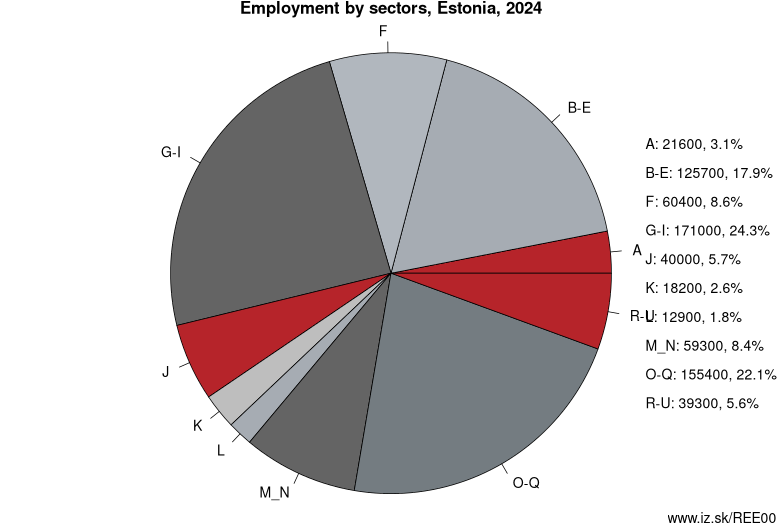
From Wikipedia : Estonia (Estonian: Eesti [ˈeːsʲti] (listen)), officially the Republic of Estonia (Estonian: Eesti Vabariik), is a country in Northern Europe. It is bordered to the north by the Gulf of Finland across from Finland, to the west by the Baltic Sea across from Sweden, to the south by Latvia, and to the east by Lake Peipus and Russia. The territory of Estonia consists of the mainland and of 2,222 islands on the eastern coast of the Baltic Sea, covering a total area of 45,227 km2 (17,462 sq mi), and is influenced by a humid continental climate. Tallinn, the capital of Estonia, and Tartu are the largest cities and urban areas in the country. Other notable cities include Narva, Pärnu, Kohtla-Järve and Viljandi. The official language of the country, Estonian, is the second-most-spoken Finnic language.
The territory of Estonia has been inhabited since at least 9,000 BC. Ancient Estonians became some of the last European pagans to adopt Christianity following the Livonian Crusade in the 13th century. After centuries of successive rule by Germans, Danes, Swedes, Poles and Russians, a distinct Estonian national identity began to emerge in the 19th and early 20th centuries. This culminated in independence from Russia in 1920 after a brief War of Independence at the end of World War I, where Estonians, led by General Laidoner, had to fight for their newborn freedom. Initially democratic prior to the Great Depression, Estonia experienced authoritarian rule from 1934 during the Era of Silence.
Neighbours: Latvia
Subregions: Põhja-Eesti, Lääne-Eesti, Kesk-Eesti, Kirde-Eesti, Lõuna-Eesti
Suggested citation: Michal Páleník: Europe and its regions in numbers - Estonia – EE00, IZ Bratislava, retrieved from: https://www.iz.sk/PEE00, ISBN: 978-80-970204-9-1, DOI:10.5281/zenodo.10200164

 Share
Share Facebook
Facebook Twitter
Twitter News
News